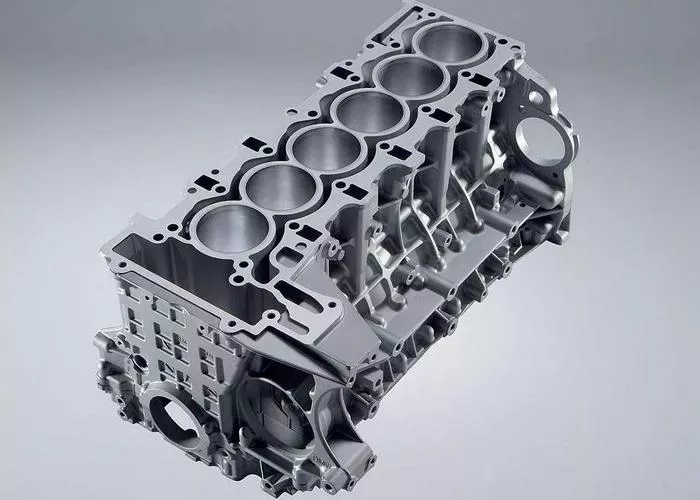An Inline-3 engine, often referred to simply as an I3 engine, is a three-cylinder piston engine with all cylinders arranged in a straight line along a single crankshaft. This compact design is particularly popular among small to mid-size cars, motorcycles, and some compact industrial machines. Due to its simplicity and reduced weight, the Inline-3 engine offers a balance of efficiency, performance, and affordability, making it an attractive option for many applications.
Unlike larger engines, which might prioritize sheer power output, the Inline-3 is about maximizing the power-to-weight ratio and optimizing fuel economy without sacrificing too much in terms of driving enjoyment. Inline-3 engines are often naturally aspirated or turbocharged, and thanks to modern engineering technologies like direct fuel injection, variable valve timing, and advanced Instrumentation, they can deliver surprising performance figures.
How Does an Inline-3 Engine Work?
At its core, the working principle of an Inline-3 engine follows the fundamental four-stroke combustion cycle — intake, compression, power, and exhaust. This is the same principle that governs a 4-cycle engine, which dominates today’s automotive industry.
1. Intake Stroke
During the intake stroke, the intake valve opens, and the downward motion of the piston draws a mixture of air and fuel into the combustion chamber. In modern Inline-3 engines, this process is enhanced with technologies like turbocharging to ensure optimal air-fuel mixture density.
2. Compression Stroke
Next, the intake valve closes, and the piston moves upward, compressing the air-fuel mixture into a small volume. The tighter the compression, the more powerful the combustion that follows, thus affecting the engine’s efficiency and power output.
3. Power Stroke
When the compressed air-fuel mixture is ignited (typically by a spark plug), it combusts explosively, pushing the piston downward. This movement turns the crankshaft, which ultimately powers the vehicle.
4. Exhaust Stroke
Finally, the exhaust valve opens, and the upward motion of the piston expels the spent gases from the combustion chamber through the exhaust system.
Key Design Features of an Inline-3 Engine
One of the most notable aspects of an Inline-3 engine is its compactness. By eliminating a cylinder compared to an inline-4 engine, the I3 saves space and reduces weight, both critical factors in small vehicle design.
Compact and Lightweight
The Inline-3’s lighter weight improves vehicle agility, reduces fuel consumption, and enhances overall handling dynamics. For this reason, many economy cars and compact SUVs utilize I3 engines to achieve better mileage and lower emissions without compromising city performance.
Vibration and Balance
A significant engineering challenge with the Inline-3 engine is vibration. Since three pistons are working together, the engine lacks natural mechanical balance, resulting in more vibration compared to inline-4 or inline-6 engines. To counter this, manufacturers often install balance shafts, specially tuned engine mounts, and advanced software to reduce NVH (Noise, Vibration, and Harshness) levels.
Turbocharging and Direct Injection
In order to extract higher performance from a small displacement, many modern Inline-3 engines are turbocharged. This allows them to produce torque and horsepower figures that rival much larger naturally aspirated engines. Direct fuel injection further boosts efficiency and power while lowering emissions.
Applications and Real-World Examples
The Inline-3 engine isn’t limited to compact passenger vehicles. It’s widely used in motorcycles, marine applications, and even industrial machinery. Models like Ford’s 1.0L EcoBoost and BMW’s B38 1.5L engine demonstrate how far the technology has evolved, delivering outstanding performance in small packages.
Comparison to Other Engine Configurations
Compared to rotary engines, Inline-3 engines are more mechanically conventional but offer better reliability and emissions control. Against flat engines, the I3 is simpler and more compact, albeit with slightly more vibration.
In the broader family of inline engines, the Inline-3 sits as one of the most compact yet capable designs. While an Inline-4 provides better balance and smoother operation, the I3 provides better packaging and weight advantages, making it ideal for specific use cases.
Efficiency and Environmental Impact
Fuel efficiency is a major strength of the Inline-3 engine. Smaller displacement combined with modern technologies like cylinder deactivation and stop-start systems ensures excellent fuel economy figures. Also, fewer materials are used in manufacturing an I3 engine, resulting in a smaller carbon footprint compared to larger multi-cylinder engines.
Additionally, Inline-3 engines have proven particularly adaptable to hybrid applications. Their compact size leaves room for electric motors and batteries, enabling more efficient hybrid designs without significant compromises on space.
Challenges Facing Inline-3 Engines
Despite their advantages, Inline-3 engines do face several challenges. Apart from inherent vibration issues, they also tend to generate a distinctive sound that may not appeal to all drivers. Performance enthusiasts often prefer larger engines for their smoother power delivery and more exhilarating sound profiles.
Furthermore, because Inline-3 engines typically operate at higher RPMs to deliver required power, long-term durability can sometimes be a concern, particularly in turbocharged variants. Proper maintenance and adherence to service intervals become even more critical.
Instrumentation and Monitoring in Inline-3 Engines
Modern engine design relies heavily on sophisticated Industrial Instrumentation to monitor and optimize performance. Sensors track critical parameters like air-fuel ratio, engine knock, and exhaust emissions, feeding data into the engine control unit (ECU) to adjust engine operations in real-time. This precision instrumentation ensures that even a relatively small engine like an Inline-3 can meet stringent modern performance and emissions standards.
The various Instrumentation Types used in these engines — including pressure sensors, oxygen sensors, and vibration sensors — contribute significantly to their reliability and efficiency.
Conclusion
The Inline-3 engine embodies a brilliant blend of simplicity, efficiency, and ingenuity. Though it faces challenges in balance and refinement compared to larger engines, modern technology has significantly mitigated these downsides. As manufacturers strive to meet tightening fuel economy and emissions regulations without sacrificing performance, the Inline-3 engine is poised to remain a cornerstone in the automotive world for years to come.
Whether turbocharged for spirited driving or tuned for maximum efficiency in hybrid systems, the Inline-3 engine showcases how thoughtful engineering can make a small package deliver big results.

